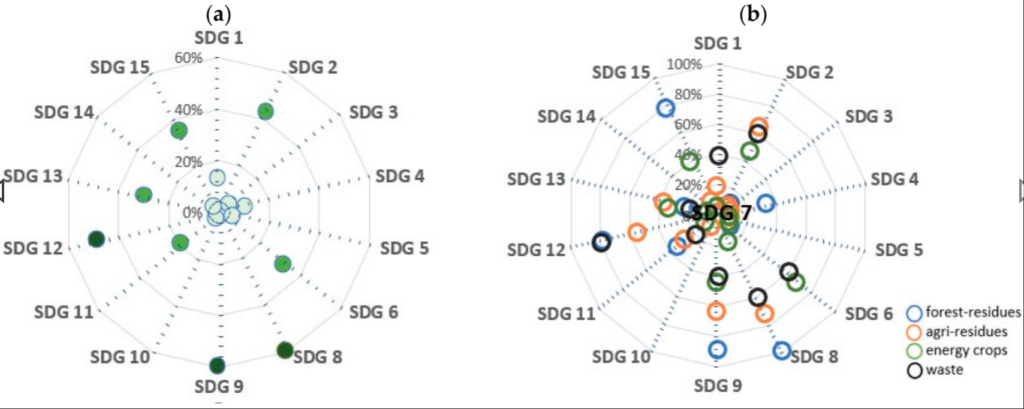Contribution of Biomass Supply Chains to the Sustainable Development Goals When Implemented for Bioenergy Production
The United Nations (UN) Sustainable Development Goals (SDGs) were adopted by all UN Member States in 2015 to achieve the UN’s 2030 Agenda for Sustainable Development. They serve as a comprehensive framework to guide national and international development, embodying the importance of developing holistic policies that address environmental, social and economic priorities. Such an approach is particularly important for the sustainable production of biomass for bioenergy, or any other bio-based product in the bioeconomy for that matter, where its growth, harvest, collection, storage, transport, processing and use can have positive and/or negative impacts on people, communities and ecosystems.
While a number of studies have assessed various aspects of bioenergy systems and biomass supply chain sustainability, with a handful drawing connections between those systems and the SDGs, none have differentiated between biomass supply chain types (i.e. forest, agriculture residue, energy crops, waste) or examined the contributions of these different supply chains to the SDGs when implemented for bioenergy production.
This paper, developed as part of the IEA Bioenergy strategic inter-task project on the role of bioenergy in a well-below two degrees (WB2) and SDG world, illustrates the role different biomass supply chains can play in achieving the SDGs while simultaneously highlighting precautions to avoid adverse effects. Using the SDGs as a normative framework, the authors reviewed 37 best practice case studies from 18 nations worldwide. The paper builds on existing research to increase our understanding of both the potential positive and negative impacts biomass supply chains developed specifically for bioenergy can have socially, environmentally and economically.
The full paper can be found in Open Access at the Journal Land and is available here: https://www.mdpi.com/2073-445X/10/2/181
Conclusions
The SDGs that are most likely to be linked to bioenergy end-use, apart from SDG 7 (Affordable and Clean Energy), are related to social equity, health, and education and include SDGs 1 (No Poverty), 3 (Good Health and Well-being), 4 (Quality Education), 5 (Gender Inequality) and 10 (Reduced Inequalities). Other relationships with SDG targets, mainly SDGs 2 (Zero Hunger), 6 (Clean Water and Sanitation), 8 (Decent Work and Economic Growth), 9 (Industry, Innovation, and Infrastructure), 11 (Sustainable Cities and Communities), 12 (Responsible Production and Consumption) and 15 (Life on Land) are related to the supply of different types of biomass as opposed to the generation of bioenergy, suggesting that the relationships exist regardless of the biomass end-use.
Beyond directly contributing to SDG 7, at least half of the 37 documented best practice case studies supported progress towards SDGs 8, 9 and 12; however, the ways in which supply chains contributed often differed. Agricultural biomass supply chains were most likely to contribute to SDGs 2 and 6, while waste and forest supply chains were most likely to contribute to SDG 15. The development of biomass supply for bioenergy was also found to indirectly contribute to socioeconomic oriented SDGs such as SDG 1, 4, 5 and 10.
Figure A: Percentage of total case studies contributing to each SDG
Figure B: Cases by biomass supply chain type contributing to SDGs
Furthermore, this work informs how SDGs can be used by project developers and policy makers as a normative framework to guide the implementation of sustainable biomass supply chains, whether it be for bioenergy systems or the broader bioeconomy. This will become ever more important as countries seek to achieve policy objectives across a broad spectrum of topics such as climate change, biodiversity and ecosystem services, socio-economic development, and diversity and inclusion.



